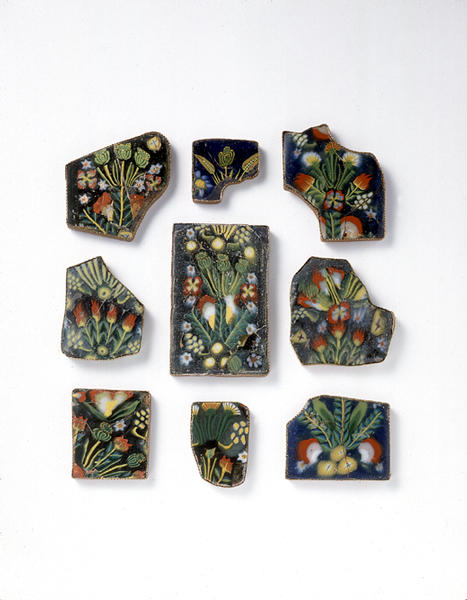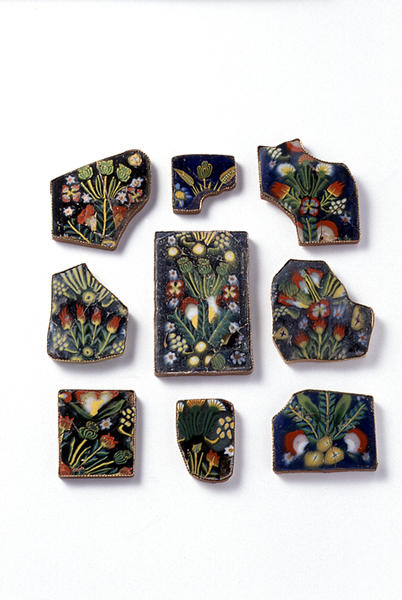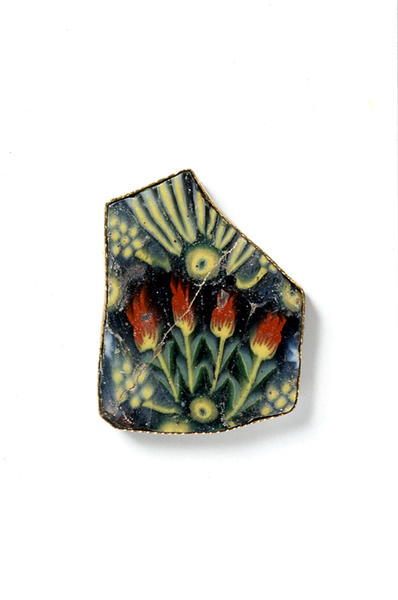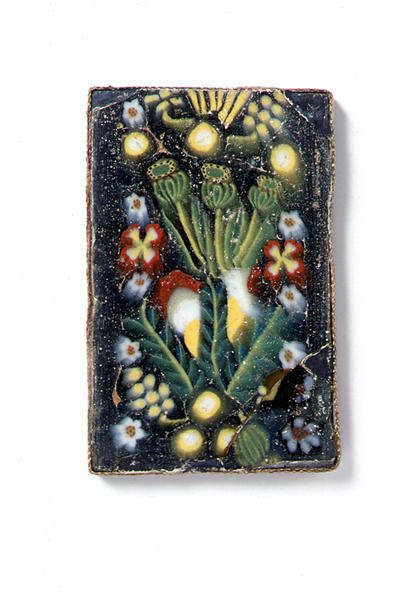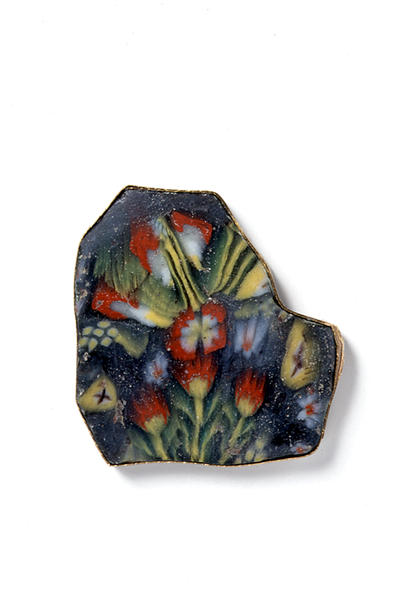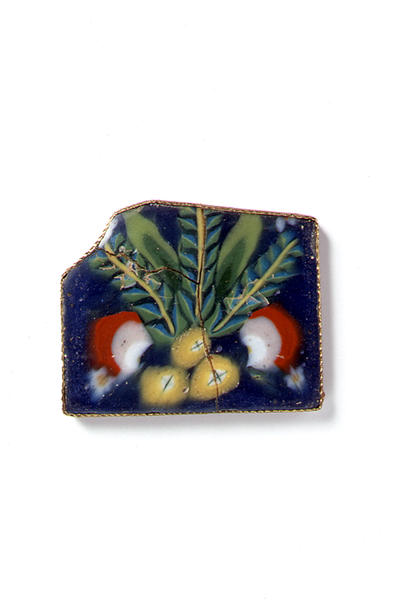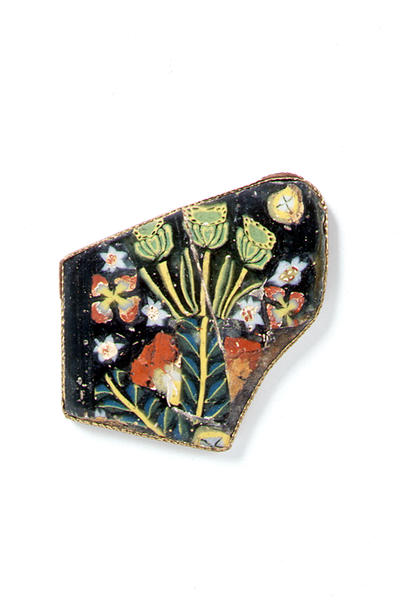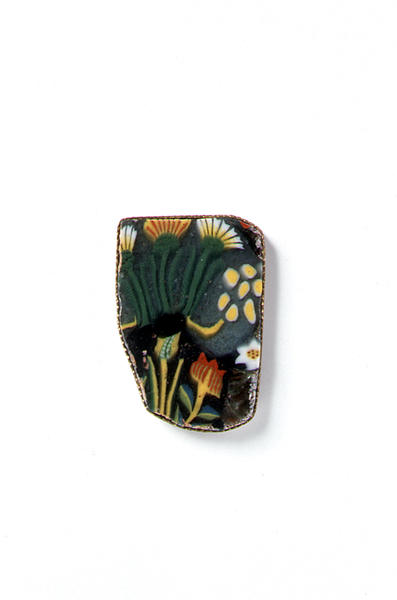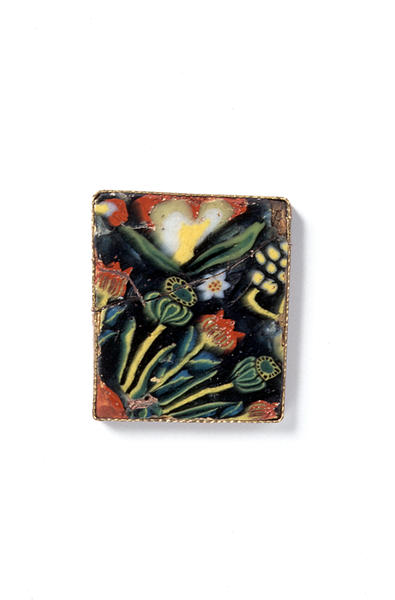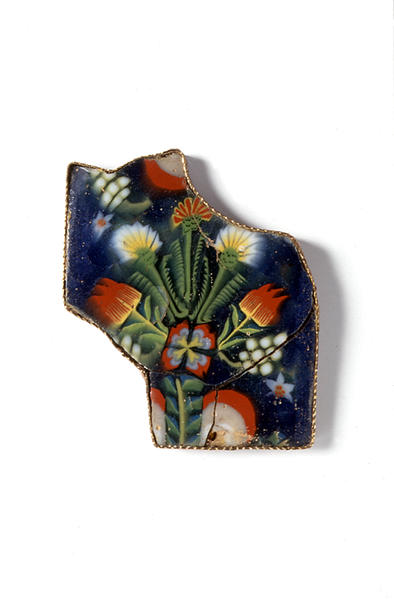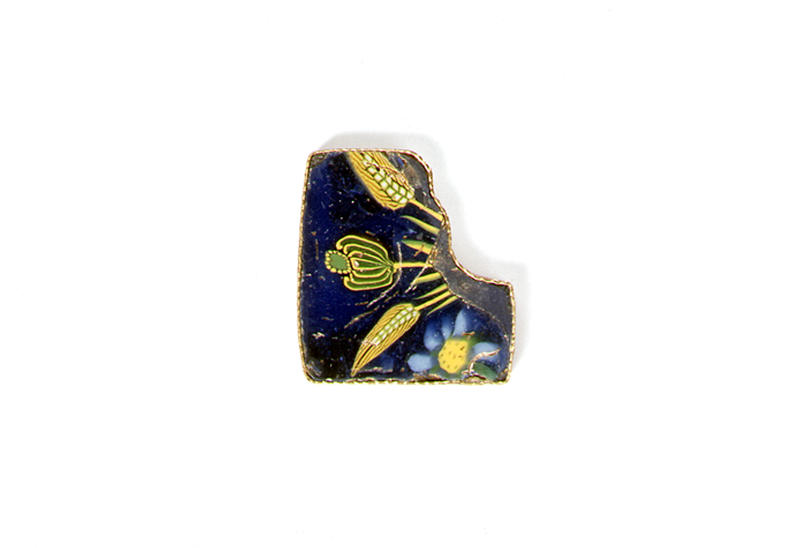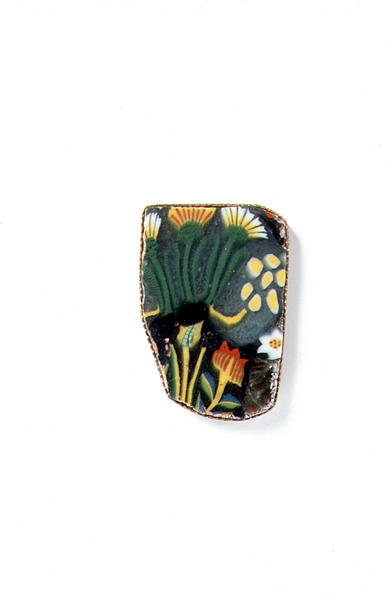花文飾板
- エジプト
- 紀元前1-紀元後1世紀
- ガラス
彩り鮮やかな植物が配された飾板である。水仙やチューリップに似た花や麦など、全部で12種類ほどの植物を数えることができる。おのおのの花や葉は、赤色、黄色、白色、緑色、水色で構成されるモザイクガラスで作られており、それを紺色あるいは灰緑色のガラスに埋め込んで溶着した。地のガラスと同色の棒ガラスで両側が枠取りされている例があり、幅が6.0~6.5センチの細長い板状のものがあったことがわかる。各モティーフを左右対称に配置してひとまとまりの植物文を構成し、それを縦に並べたようである。地のガラスが透明なため、花や葉や茎の側面が透けて見えて画面に奥行きを与えている。この飾板は、地が紺色のものと灰緑色のものの2種類あるが、前者のほうがより精緻な作りである。表面は平坦かやや盛り上がっており、なめらかに磨かれているが、裏面は別のガラス片を貼り付けて裏打ちしたものが多く、きちんと整えられてはいない。用途ははっきりしないが、この大きさから考えて、神殿の壁の装飾タイルとして使われたのかもしれない。この種の飾板の出土例はエジプト中部に集中している。プトレマイオス時代から帝政ローマ時代初頭にかけてエジプトで隆盛を極め、製作技術でも美しさでも極致に達した装飾用のモザイクガラスの中で、この花文飾板は最も大きく華やかなものの1つである。
Catalogue Entry
Decorative plaques with brightly colored vegetation motifs. There are narcissus-like flowers, tulips, wheat and others for a total of 12 different plant motifs. The flowers and their leaves are made out of mosaic glass in a vivid array of red, yellow, white, green, and pale blue, all embedded into a ground of cobalt or grayish green glass and then fired together. There is one example which shows both sides framed in rod glass that is the same color as the ground glass, and this long rectangular shaped form was 6.0 to 6.5cm in width. Each motif is arranged in right-left symmetry in a combined floral design which is then repeated vertically. Because the ground glass is transparent, the sides of the flower leaves and pistils show through the clear ground glass and this gives the image surface a sense of depth. These decorative panels can be divided into two groups by ground color, those with cobalt ground glass and those with ash green ground color, with the cobalt group more finely formed. The surfaces of these panels are either flat or slightly raised, and smoothly polished, but the backs of many of the panels show bits of glass which were attached to the panels and are thus not perfectly finished. While the purpose of these panels is not clear, given their size they may have been used as decorative tiles on either the walls of temples. Excavated examples of this type of decorative panels mainly have been found in Middle Egypt. They were extremely popular in Egypt from the Ptolemaic period through the beginning of the Imperial Roman period, and these floral motif panels are one of the supreme achievements of the decorative mosaic glass works which show extremely high levels of formative technique and beauty.
